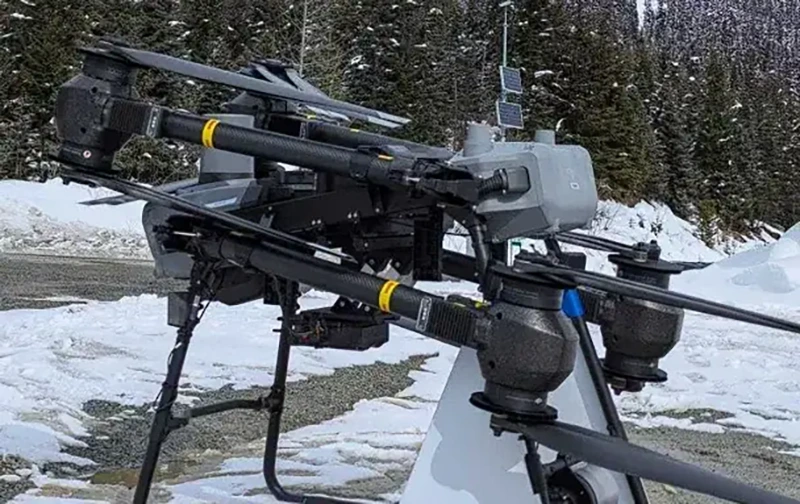Transport Canada Approves AVSS SnowDart System for Avalanche Mitigation
In a groundbreaking advancement for mountain safety, Transport Canada has granted a Special Flight Operations Certificate (SFOC) to AVSS, allowing the Canadian technology firm to deploy its SnowDart system for avalanche control across the country. This approval marks a pivotal moment in the modernization of avalanche mitigation, introducing drone-based solutions to an industry long reliant on outdated and hazardous methods.
AVSS, based in New Brunswick, is known globally for its ASTM-compliant drone parachute recovery systems and guided delivery hardware. With the introduction of its Precision Avalanche Management System (PAMS), the company is now bringing its expertise in airdrop dynamics and pyrotechnics to the snow safety industry.
PAMS includes autonomous flight planning software, detailed data analytics tools, and the SnowDart™ drop system—a compact, eco-friendly explosive designed to trigger controlled avalanches safely and efficiently. SnowDarts™ are deployed via drone into predetermined avalanche start zones, where they perform both surface-level and air blasts to release unstable snow before it can slide naturally. Following detonation, the system collects critical operational data to help forecast future missions and evaluate effectiveness.
AVSS began developing its avalanche technology in 2020, undertaking rigorous testing of both delivery and detonation systems while navigating the regulatory complexities of manufacturing and storing energetic materials. The breakthrough came when Transport Canada contracted AVSS to assess the technology’s potential for rail corridor avalanche control through its Innovation Solutions program.
In 2024, the company secured further funding from FEDDEV Ontario for a multi-year project aimed at expanding the system’s software and sensor capabilities. These advancements allow users to not only trigger avalanches but also gain deeper insights into blast types and avalanche pathways, all while improving operational safety.
For decades, avalanche control in Canada has depended on tools like WWII-era Howitzers, helicopter-dropped charges, and dangerous on-the-ground operations by avalanche technicians. Remote Avalanche Control Systems (RACS), though effective, require heavy infrastructure and are limited to fixed locations.
Drone-based avalanche control changes the equation. Drones can be deployed rapidly, operate in poor weather, and eliminate the need for personnel to be within proximity of avalanche start zones. Compared to helicopters, drones offer lower hourly operating costs and require smaller teams to manage missions. When RACS systems are offline—due to maintenance or rearming—drones offer an immediate and mobile alternative.
While drones may not entirely replace traditional avalanche mitigation methods, they represent a major step forward in efficiency, safety, and adaptability. As AVSS CEO Joshua Ogden noted, “Drones are not here to replace the current toolkits, but to complement and enhance what exists.”
With the new Transport Canada SFOC in place, AVSS is now ready to deploy PAMS for government agencies, ski resorts, mining operations, and rail corridors in Canada and beyond. Through distribution partnerships, the Canadian-developed system is poised to enter international markets, further positioning Canada as a leader in avalanche safety technology.
As climate patterns shift and demand for safe winter access increases, Canadian innovations like SnowDart™ are setting a new standard for avalanche mitigation. Safer, faster, and more cost-effective—drone-based control may soon become a core component of modern snow safety operations from the backcountry to the rail lines.













Comments